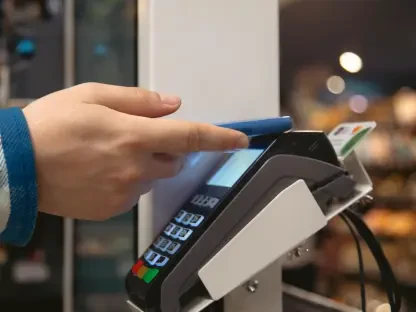In today’s fast-paced world, businesses and policymakers are constantly seeking innovative ways to influence consumer behavior. One effective method is the use of nudges, a concept that has roots in behavioral science. Nudges are subtle prompts or cues designed to encourage desired actions without restricting choices. This guide will explore how nudges can significantly impact consumer behavior and decision-making, offering insights into their transformative power and practical applications.
Understanding the Transformative Power of Nudges
Before delving into the methods of using nudges, it is crucial to understand their inherent power. Nudges serve as gentle guidance that subtly steers consumers toward certain behaviors without explicit directives. They play an essential role in altering consumer behavior by indirectly impacting decision-making processes. These small interventions can lead to significant outcomes due to their subtlety and effectiveness. Moreover, the ethical implications of nudging—balancing influence with the freedom of choice—are paramount considerations for those deploying these techniques.
Historical Evolution and Significance
The concept of nudging is not a novel phenomenon; it has evolved over time, deeply embedded in various public policies and marketing strategies. Historically, nudging techniques have been used to bring about societal change, such as encouraging the use of seat belts or promoting healthier lifestyle choices. In contemporary contexts, nudges have found significant relevance in marketing, allowing businesses to influence consumer decisions while enhancing their engagement strategy. The broad application of nudges has marked a paradigm shift in how both public and private sectors address consumer behavior.
Step-by-Step Guide to Implementing Effective Nudges
Step 1: Clarifying Desired Consumer Actions
The first step in influencing behavior through nudges is to clearly define the desired outcome. Articulating specific actions that consumers are encouraged to take is essential. This precision ensures that the communication strategy effectively targets those behaviors, resulting in a higher likelihood of consumer compliance. Specificity over generality is key in this step, as it reduces ambiguity and guides consumers toward exact actions.
Step 2: Leveraging Successive Approximations
To achieve larger behavioral shifts, start with smaller, manageable changes. This approach is rooted in the psychological principle of shaping behaviors through positive reinforcement over time. By initiating with minor actions, such as signing up for newsletters, and gradually progressing toward more significant commitments, consumers are more likely to align with the desired behaviors. The strategy of “Start Small, Think Big” advocates for minor adjustments building up to more substantial change.
Step 3: Creating a New Norm
Establishing a new behavioral norm is instrumental in transforming consumer habits. By demonstrating the benefits of adopting new actions, such as transitioning to digital platforms, consumers are more likely to embrace change. The example of migrating consumers from paper billing to online methods shows how providing logistic conveniences and aligning with consumer needs can effectively disrupt existing habits.
Step 4: Modifying Environmental Context
The impact of the environment on consumer decisions cannot be understated. Altering the physical space or context in which decisions are made can influence behavior significantly. For instance, changing store layouts or the design of payment interfaces can subtly direct consumer behavior toward intended outcomes. By designing spaces that naturally lead to desired consumer actions, businesses can achieve more favorable engagement results.
Step 5: Implementing Trial Offers and Freebies
Trial offers and freebies serve as powerful tools in cultivating consumer interest and commitment. These trials provide consumers with a taste of what’s offered, enhancing the likelihood of full adoption. However, it is crucial to be mindful of the limitations of free offers. While they can effectively increase initial engagement, they may not always lead to sustained behavior change without strategic follow-up actions.
Step 6: Encouraging Commitment and Reciprocity
Social psychology indicates that commitments and reciprocal behaviors are strong motivators for change. When consumers publicly commit to an action, they are more likely to follow through due to a psychological need to appear consistent. The viral ALS Ice Bucket Challenge serves as a prime example of how social proof and public commitment can drive wide-reaching behavioral change. Encouraging these dynamics within consumer interactions can enhance engagement.
Key Steps Recap
To succinctly encapsulate the steps discussed:
- Clearly define intended consumer actions with specificity.
- Utilize gradual behavioral adjustments, beginning with small changes.
- Establish new norms to encourage habit formation.
- Modify environmental contexts to influence consumer choices.
- Use trial offers and freebies wisely to foster initial engagement.
- Leverage social commitments and reciprocity to encourage sustained behavior.
Broader Implications and Future Outlook
Nudging techniques extend beyond individual applications, holding potential for broader societal changes. Industries ranging from healthcare to finance can benefit from strategically implemented nudges. Thoughtful consideration of ethical implications and future trends is essential. As technology evolves, so do the methods available for deploying nudges. Embracing advancements while adhering to ethical guidelines will shape the landscape of consumer influence moving forward.
Conclusion
In conclusion, the transformative power of nudges in influencing consumer behavior is both profound and multifaceted. By understanding and applying the outlined steps, businesses and policymakers can effectively guide consumer actions toward beneficial outcomes. This guide underscores the importance of ethical considerations and strategic planning in harnessing the potential of nudges. As the field continues to evolve, staying informed of innovative methods and applications will be crucial for continued success in this domain.









